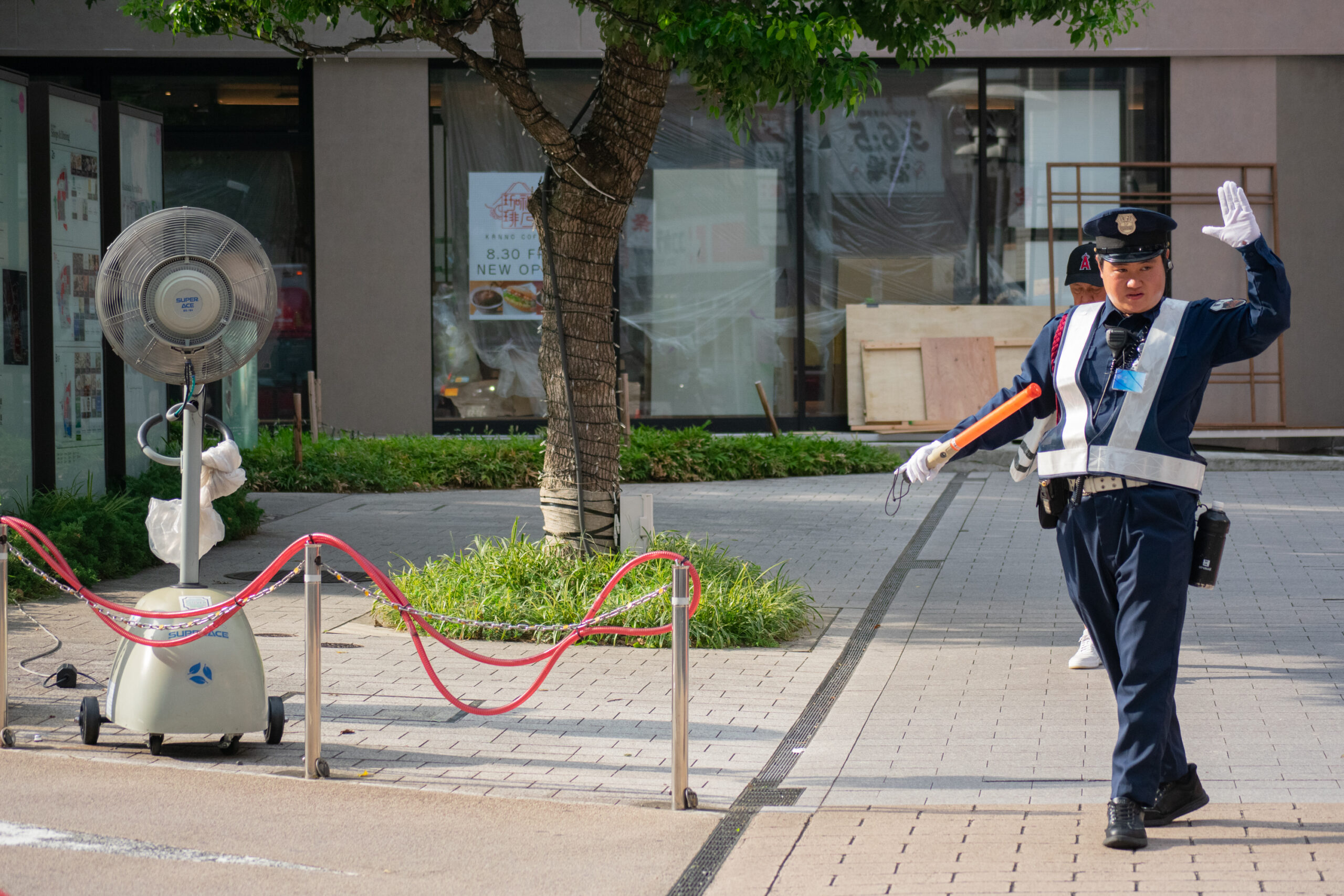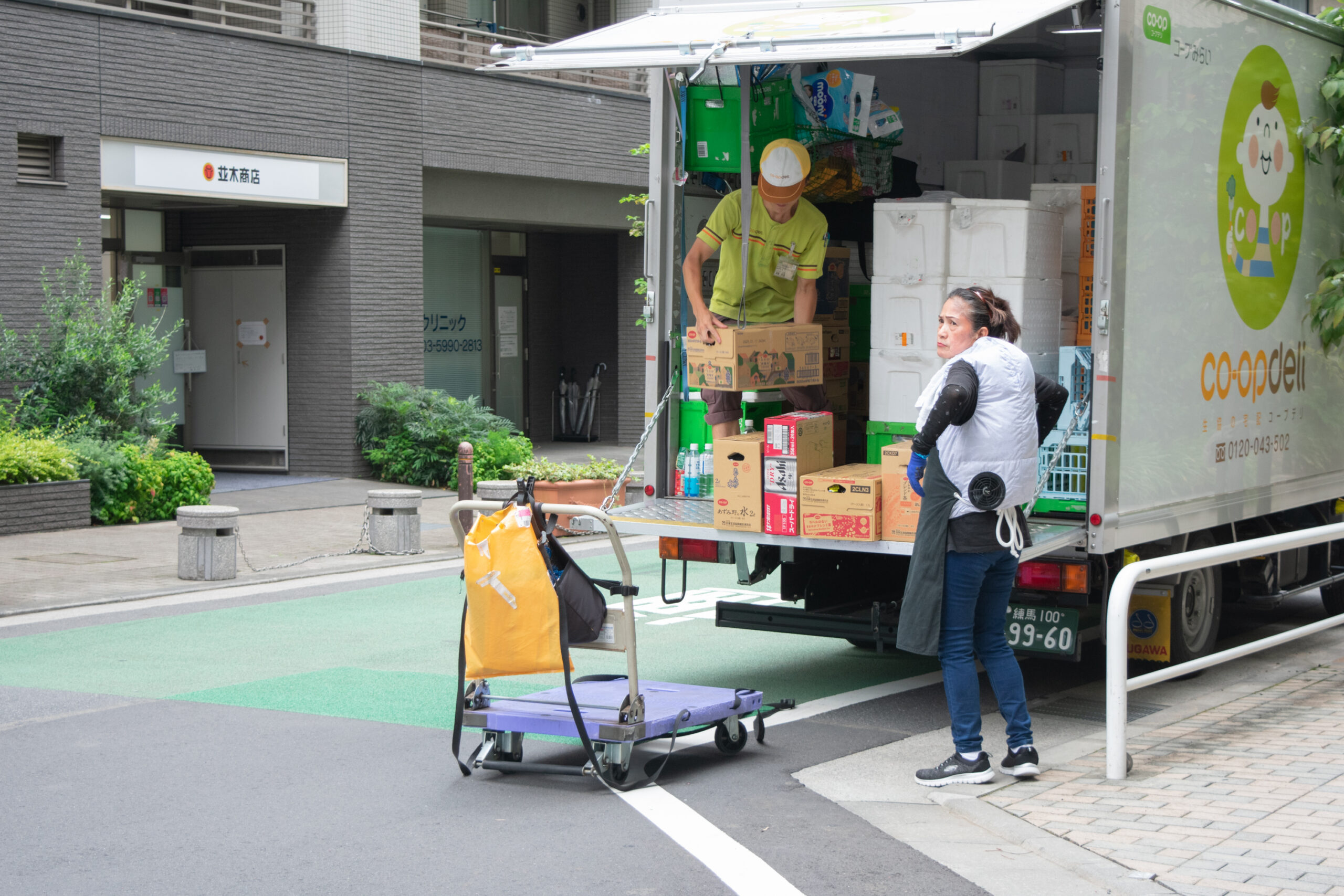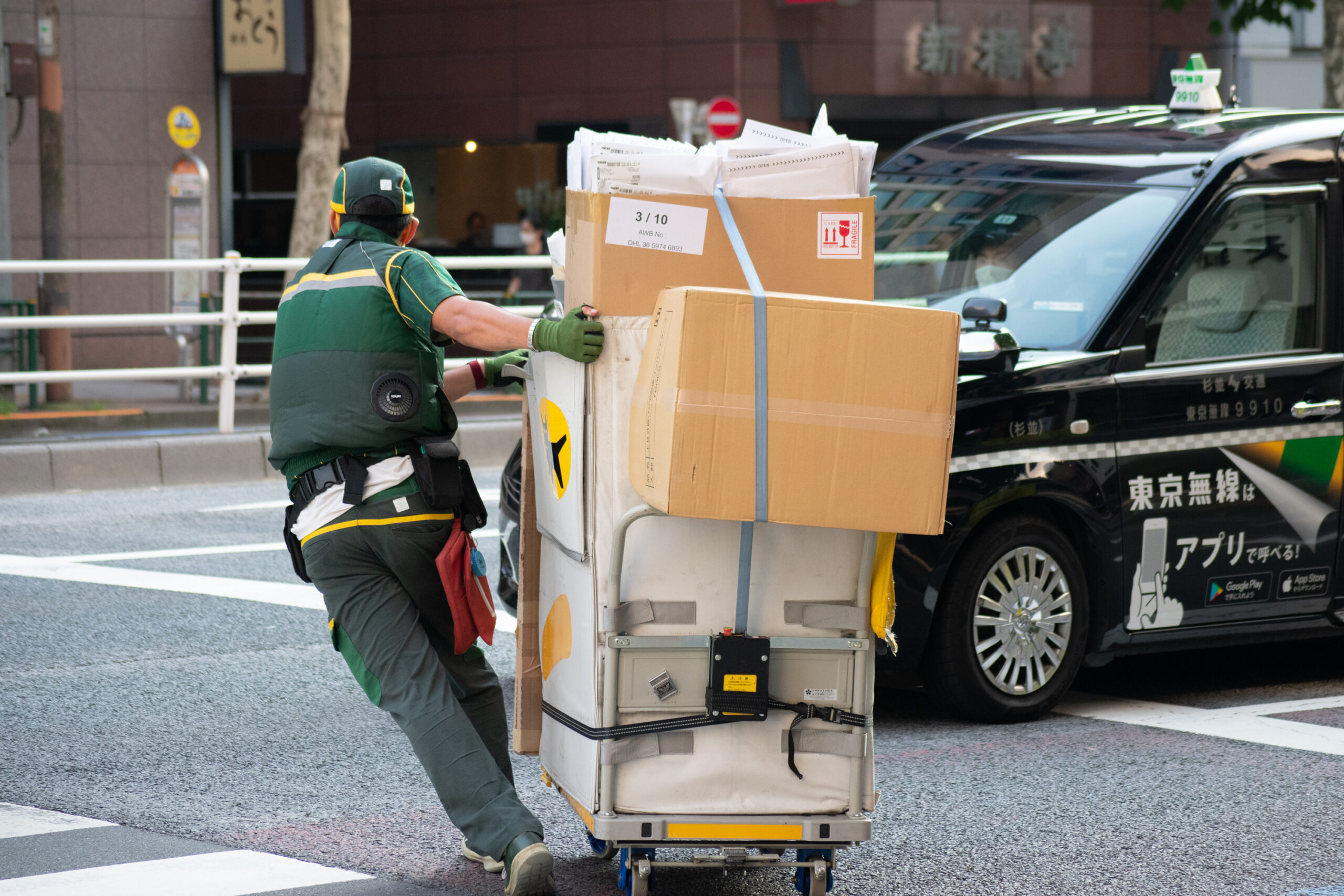Boiling Point
Clocking off: Japan’s hotter summers put limit on outdoor work
For workers who don’t get to benefit from Japan’s numerous air-conditioned spaces — builders, delivery personnel, farmers and many more besides — even an array of gadgets such as cooling-fan jackets are not necessarily enough to help them persevere through increasingly hot summers. That, in turn, is putting businesses in a tough spot as they try to balance productivity and safety.
One of Japan’s most prominent construction projects, located on an artificial island in Osaka Bay, is a case in point.
Following record high temperatures last summer, in a statement the Kansai branch of the National Federation of Construction Workers’ Unions (Zenkensoren) raised concerns that “there have been frequent cases of people transported to hospital due to heatstroke” at the 2025 Osaka Expo construction site on Yumeshima island. NHK reported eight suspected heatstroke cases at the expo site in the six months through September 2023.
At the same time, construction of the expo’s overseas pavilions is reportedly delayed, and union representatives say they’ve heard from workers that at the current rate of progress the expo site won’t be ready in time for the April opening.
All of this has been unfolding under sweltering conditions that feel “totally different” compared with previous decades, says Satoru Takyu, general manager of Zenkensoren’s labor policy department.
As climate change brings increasingly hot summers to Japan, those working outdoors or in hot indoor environments are at particular risk of heat stress, which can cause headaches, nausea, dizziness and muscle pain, and adversely affect mental health. Severe cases of heatstroke can result in permanent disability or death.
In 2023, Japan saw record high temperatures across the country, and this July set a new record for highest daily average temperature for that month for the second year in a row.
Construction is far from the only industry facing severe impacts due to extreme heat.
Despite the proliferation of clothing equipped with cooling fans and other countermeasures, since 2017 there have been about 500 to 1,200 occupational heatstroke cases annually, including roughly 24 fatalities on average each year, according to health ministry statistics. Most recently, 2023 saw 1,106 cases, including 31 fatalities. However, experts caution that the true number of cases may be much higher than official figures.
Furthermore, a number of other factors — including advanced age, foreign nationality, lack of experience and pressure to finish a job on schedule — may contribute to a worker missing signs of heat stress or trying to push through them.

The International Labour Organization estimates that by 2030 over 2% of total working hours worldwide may be lost every year due to increased temperatures. In Japan, climate change is forcing businesses to sacrifice productivity for safety as experts, labor advocates and a growing number of employers acknowledge that the most effective heatstroke countermeasure is to simply stop work when conditions become dangerous.
Under the sun, against the clock
With 886 cases, 54 of them fatal, during the period from 2019 to 2023, the construction industry leads Japan’s tally for occupational heatstroke. Last year, Zenkensoren’s Kansai branch became concerned by reports that construction workers at the Osaka Expo’s Yumeshima site were at high risk of heatstroke.
“At the time, they were still building the foundation, so there were virtually no structures at the site,” says Hitomi Sakai, vice chairman of the Kyoto construction workers union and who was involved in releasing Zenkensoren Kansai’s statement on concerns about heatstroke. “Workers said that, in addition to the direct sunlight, the humid bay air sapped their strength.”
“I think it’s often difficult for workers to speak up within this multilevel subcontracting structure”
Hitomi Sakai, vice chairman of the Kyoto construction workers union
Sakai says he hasn’t heard similar reports this year. With construction progressing, he guesses that now there are more rest areas and shade. However, he says the continued hot temperatures are still a cause for concern — the Meteorological Agency says it expects high, unseasonal temperatures to continue through October.
“Specific heatstroke countermeasures are implemented by each general contractor,” a spokesperson for the Japan Association for the 2025 World Exposition says. “The association is working together with them.”
The prime contractors for the expo construction are Obayashi, Takenaka and Shimizu.
A representative for Takenaka says that the company implements various heat countermeasures from May through September, including providing cool break areas, ensuring workers stay hydrated and distributing ice slurries to workers when temperatures exceed 31 degrees Celsius on the wet-bulb globe temperature (WBGT) index, a measurement based on temperature, humidity, wind speed, and radiant heat.

“For some work at the expo construction site in which workers are continuously exposed to direct sunlight, working hours are shortened, from morning meetings to 3 p.m.,” they say.
A public relations representative from Shimizu says that the company implements heatstroke countermeasures at all its construction sites, but declined to provide specifics about the expo site. Obayashi declined to comment.
Despite initiatives from the prime contractors, Sakai still worries that countermeasures might not permeate the multiple levels of subcontractors involved in the expo construction, and that workers may not feel comfortable advocating for themselves.
“I think it’s often difficult for workers to speak up within this multilevel subcontracting structure,” Sakai says. “They fear that if they make a fuss, they might not be asked back — although prime contractors say that won’t happen.”
Takenaka says the company cooperates with its subcontractors and partners on various measures to raise awareness of heatstroke and check workers’ condition.
Compounding risk, obscuring harm
In addition to construction, other industries with high numbers of heatstroke cases include manufacturing, security, commerce and transportation. (With regard to the last one, a Yamato Transport employee recently went on strike to demand better heat countermeasures from the company, with a point of contention being that workers need to buy their own cooling-fan jackets.)
Official heatstroke case numbers are compiled based on mandatory occupational accident reports submitted to the Labor Standards Inspection Office. However, it’s likely that many cases go unreported.
“Climate change most impacts the vulnerable and disenfranchised.”
Ippei Torii, co-chair of Solidarity Network with Migrants Japan
“Some people don’t realize that work caused their heatstroke,” says Makoto Iwahashi, a member of the labor nongovernmental organization Posse. Reporting a heatstroke case also requires the employer’s cooperation, for example in terms of evidence collection, but they may be reluctant to offer that, especially if the employee’s heat stress was compounded by poor working conditions such as long hours, Iwahashi adds.
In addition, self-employed individuals don’t have to report occupational accidents, explains Shoko Kawanami, head of the Occupational Health Training Center at the University of Occupational and Environmental Health. For example, although official figures show 95 heatstroke cases among agricultural workers from 2019 to 2023, Kawanami notes that “most farmers are self-employed, so (a number of cases) likely aren’t reflected there.”
Some experts feel that foreign and Japanese workers face similarly tough conditions when it comes to heat. However, Ippei Torii, co-chair of the nonprofit Solidarity Network with Migrants Japan, says that while foreign workers may be doing the same tasks as their Japanese colleagues, they still face greater risks.
For one, foreign workers generally have less access to social safety nets.
“In Japan, it’s often up to the initiative of individual local government bodies or medical institutions to ensure that foreigners can access these safety nets,” he explains. “Inevitably, some get left out.”
In addition, visa concerns, especially for trainees, can hinder foreign workers from taking time off or leaving a job that exposes them to extreme heat. Torii says his feeling from site visits “is that foreign workers aren’t receiving sufficient information about heatstroke.”
Torii cites the example of a Chinese trainee at a farm in Ibaraki Prefecture who collapsed from heatstroke while weeding in mid-July, just three days after starting work. The trainee died in hospital a week later.
Kawanami’s 2022 paper on heatstroke prevention notes that a lack of acclimatization is a major risk factor in heatstroke fatalities. Takyu agrees, saying, “It’s said the majority of fatal heatstroke cases occur soon after the individual is hired, if they weren’t properly trained or don’t have much experience.”
Although Torii acknowledges that some employers are implementing improvements to combat heat, many still fall short when it comes to foreign workers. “They tend to see foreign workers in terms of manpower, not as people,” he says.
“After all, climate change most impacts the vulnerable and disenfranchised.”
Too hot to work
Workers and employers can take various measures to guard against heat stress. Kawanami highlights three levels of possible countermeasures short of stopping work altogether.
The first and most effective is improving the working environment by lowering its WBGT temperature, such as by providing air conditioning to hot indoor environments and shade for workplaces outdoors, as well as shifting working hours to avoid the hottest parts of the day. However, Kawanami acknowledged that the feasibility of that last measure may be limited, as WBGT temperatures can be dangerously high for large portions of the day, especially due to the intensifying effects of global warming.
The next level of countermeasures is improving working practices, such as ensuring workers take sufficient breaks and stay hydrated. Kawanami cites guidance from the U.S. National Institute for Occupational Safety and Health that provides a sliding scale of recommended work and rest periods depending on WBGT conditions and intensity of work.
But for projects that are running behind schedule, there is a chance that such guidance won’t be adhered to.

Takyu notes that workers tend to push themselves too hard when there is pressure to finish construction on schedule. “The only way to ensure workers work within the legal number of hours and maintain their health is to hire more people” despite higher costs, he says.
The final type of countermeasure Kawanami highlights is understanding each worker’s physical condition, such as age and health issues, and ensuring people don’t work past their personal limits.
In addition, workers and employers must be knowledgeable about occupational heat stress in order to prevent it. The health ministry has released guidance on occupational heat stress since 1996; it now also provides similar information in at least 10 languages, including Chinese, Vietnamese and English.
Zenkensoren disseminates information on heat stress at its national meeting in February to ensure all members are prepared before the hot weather hits. “These days, we really need to raise this issue early,” Takyu says.
Last year, the Ministry of Land, Infrastructure, Transport and Tourism revised its guidelines on civil engineering construction periods to specify WBGT temperatures of 31 C or over as a “time in which work cannot be performed.” Applying the new guidelines to roadwork projects in Fukuoka Prefecture resulted in an additional 19 days or more of rest per year, the Nikkei reported.
Sakai notes that a number of construction contractors are beginning to take such action, on top of setting heat-conscious summertime work schedules.
“In really dangerous conditions, work should stop,” he emphasizes.


